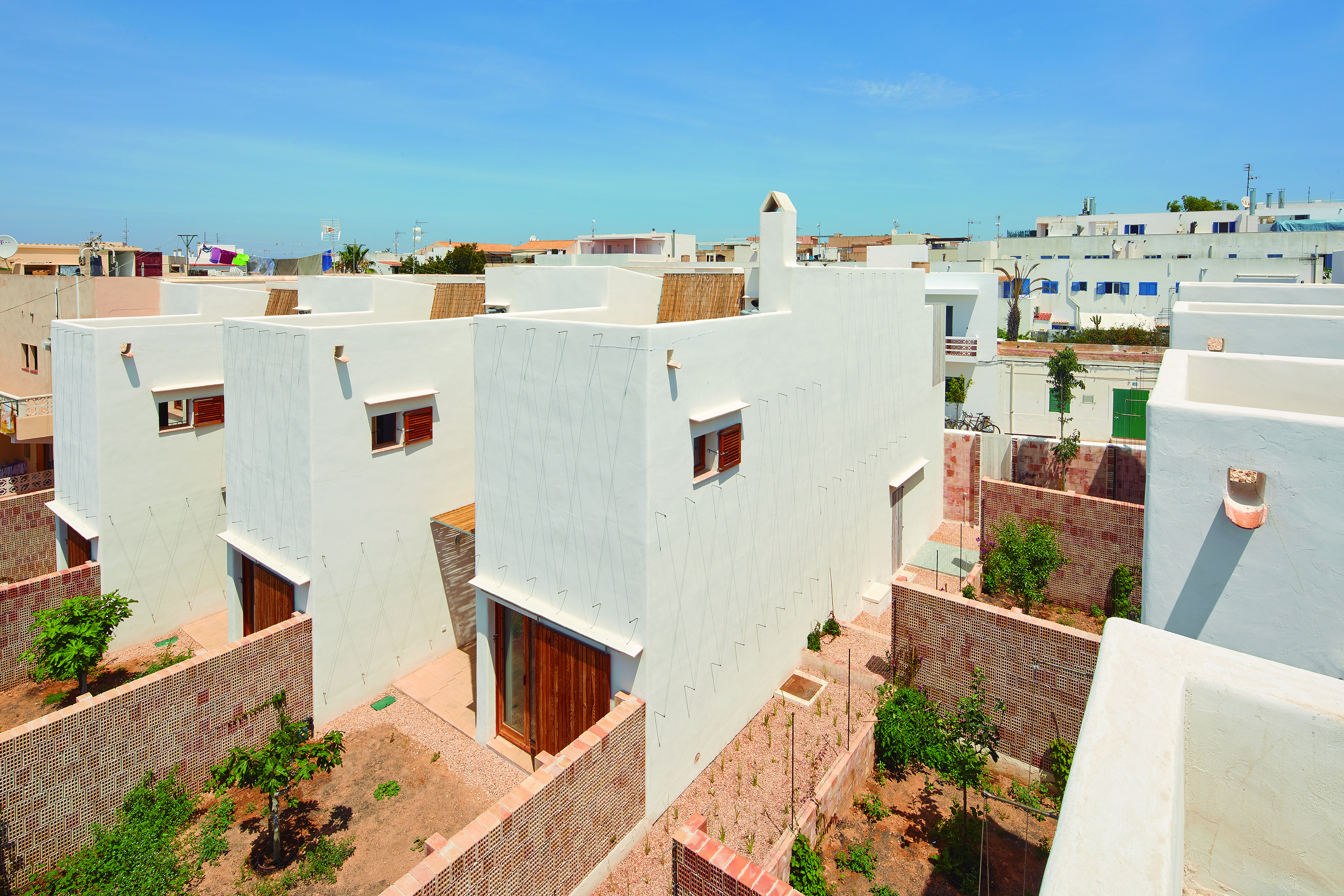
Traditional building materials such as concrete, firebrick and petrochemical insulation produce a lot of greenhouse gas emissions. The team behind LIFE REUSING POSIDONIA took a natural approach to construction. They used dried Posidonia oceanica seagrass as an effective and inexpensive thermal insulation in 14 social housing units for poor and disadvantaged people on the Balearic island of Formentera. This local, traditional and environmentally friendly construction method reduced emissions by 60%, cut energy use by 75%, and water by another 60%. The approach can be used in other coastal areas that are home to the seagrass. 41 local jobs were created to carry out the work.
LIFE REUSING POSIDONIA developed an innovative multi-family residential building model with a significantly reduced ecological footprint on the Balearic island of Formentera (Spain). The project partners constructed 14 prototype public protection dwellings to demonstrate the feasibility of this alternative building model, which links heritage, traditional architectural methods, and climate change.
A starting point was prioritising the most ecological locally-sourced products and demonstrating their economic viability: i) reusable local waste (e.g. dried Posidonia, straw, reused wood); ii) local eco-friendly products (e.g. marès sandstone, clay, slabs and bricks fired in a biomass kiln); iii) non-local eco-friendly products (e.g. laminated wood, hydraulic lime, silicate paint); and iv) recycled or optimised products (e.g. Ytong concrete blocks, or 85% recycling rate metals). For instance, the prototype building had roof insulation made of 16 cm of compacted dry Posidonia in reused pallets and walls incorporating a 25 cm thickness of Ytong, floors and foundations were made using natural hydraulic lime, acoustic insulation on floors and walls was provided by natural cork and recycled cotton boards, and windows that were all low emissive and made of wood. This ensured a high level of comfort inside (average 21ºC in winter and 26ºC in summer) with a very low energy use.
- Project duration
- 1 Aug 2013 - 29 Jun 2018
- Project locations
- Formentera, Spain
- Overall budget
- €1 580 870
- EU contribution
- €754 01247.7% of the overall budget
